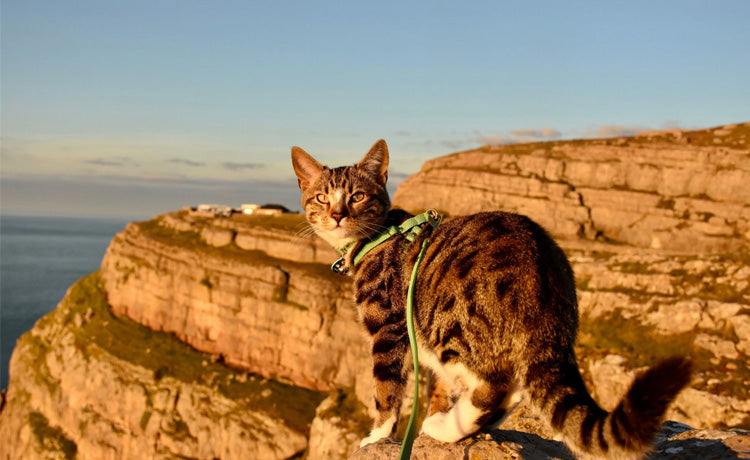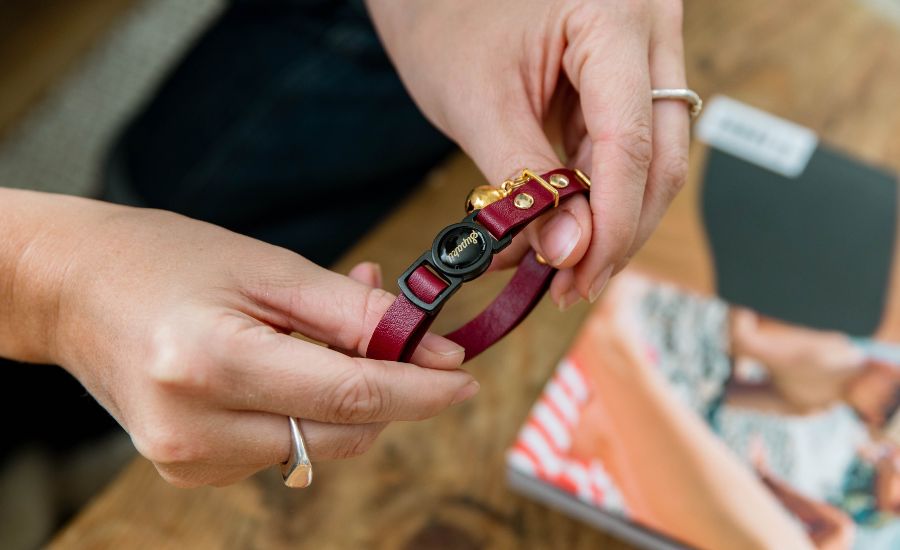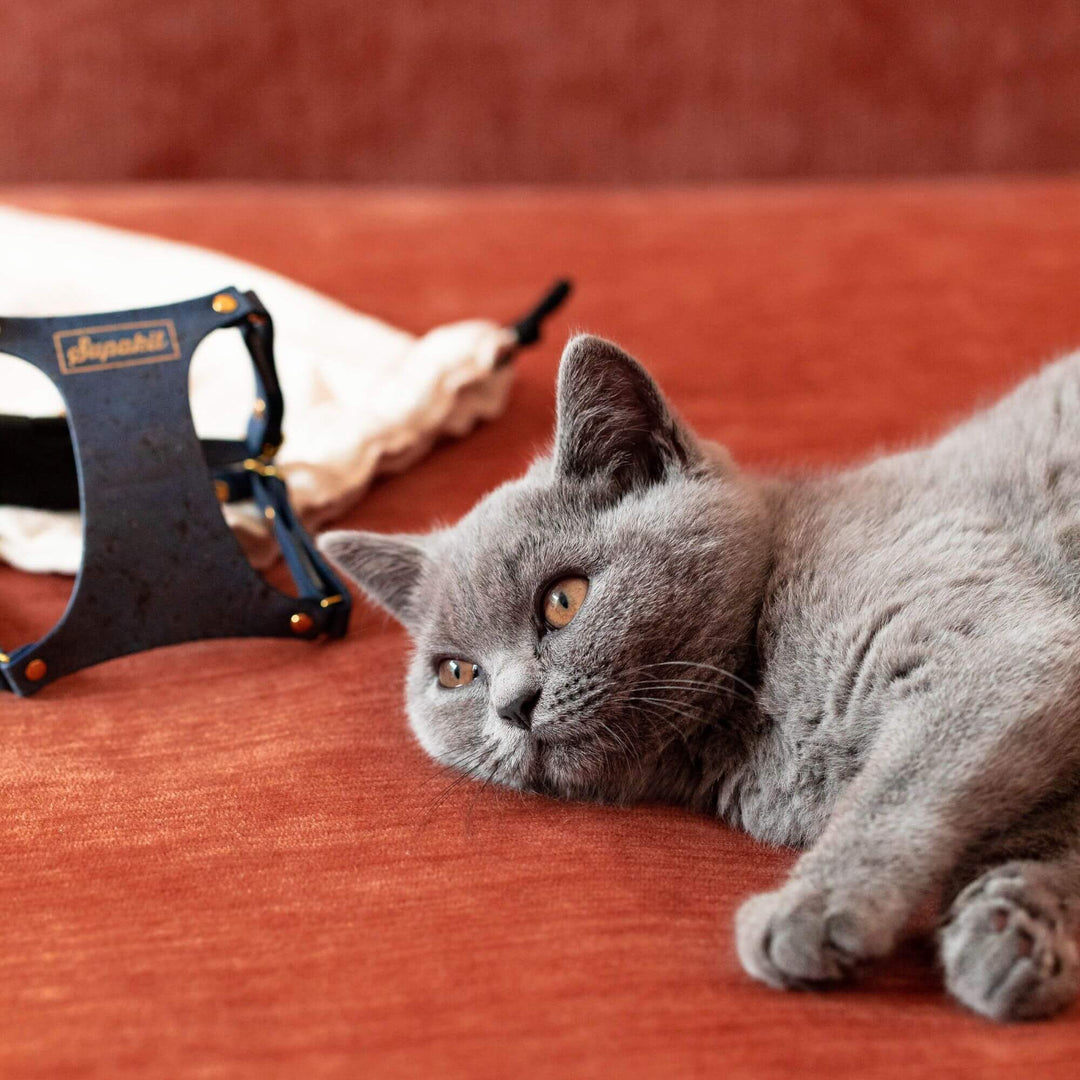Is My Cat's Harness Escape Proof? The Secret To Stopping Harness Escapes
It’s one of our most commonly asked questions here at Supakit - is my cat's harness escape-proof? But it might surprise you to discover that your cat's harness is only one small piece of the jigsaw when it comes to preventing harness escapes. So in this article, I'm going to teach you the five steps to keeping your cat’s harness escape-free. We're going to start off with the basics, but then I'm going to teach you the next-level skills that no one ever talks about to keep your little Houdini safe and secure.
Watch our YouTube video, or scroll down to read the article!
Step 1: Pick A Good Harness
It’s important to look for a harness that's specially made for cats and to choose a harness that has a strap that goes behind your cat's elbows. The reason is that most cats will escape from their harness by ‘backing out’. This is when they pull the harness off over their heads like you would pull off a pullover or a jumper. Having straps behind the elbows really helps prevent this from happening. They're not foolproof, but they are important. So that's one thing to think about when picking your cat's harness.
Step 2: A Good Fit

A well-fitting harness seems kind of obvious - you don't want to lose the harness or it's going to be much easier for them to escape. But actually more than that, a harness that is ill-fitting or loose, which hangs off of your cat’s body is going to be uncomfortable for them. Our cats are really sensitive to the movement of things across their fur, so a harness which moves around and rubs is irritating. Make sure you get a good snug fit.
Got a Supakit harness? You can check how to get the perfect fit here.
Step 3: The Leash Safe Zone
The most common type of harness escape is caused by cats backing out, where they try to pull the harness off over their heads. Fortunately, there are things we can do to make that much more difficult for them.
1. Keep the leash slack
Without a leash attached, your cat’s harness would most likely not come off. Attaching a leash facilitates your cat in removing their harness as they pull against it, using it as leverage to get out of their harness. By keeping the leash slack, we can prevent them from doing this. Of course, there may be times when you can’t keep the leash slack, so in this case, use technique number 2!
2. Keep the leash high

Keeping a high-positioned leash helps prevent our cats from creating the necessary angles to pull the harness off over their heads. Aim to always keep the leash behind your cat, at a 45-degree angle but in cases where they are trying to escape, raise this to a more vertical position.
3. Fixing a leash that's in the escape danger zone

Now, although these techniques sound simple, often in the heat of the moment, if your cat is spooked outdoors, your natural instinct will be to break both of these rules. If you find yourself in a situation where your cat is spooked outside, you will have to fight those urges and do the exact opposite. Move towards your cat to take tension off the leash, and at the same time, move your hand up in the air to create that nice high angle. When you are next, your cat with a leash pointing straight up, you can start to put tension on the leash and reel yourself downwards, toward the ground to scoop up your cat.
It can be really helpful to practice this at home before heading out on adventures.
Step 4: Avoid Tethering Your Cat

Tethering is when you attach your cat’s leash to something and then leave your cat unattended. It is important not to leave your cat unattended and tethered. Ideally, you should always be holding the leash and keeping control. By tethering your cat to a fixed point, it is easy for them to put the tension on the leash themselves and to pull their harness off over their heads.
When adventuring you should also be aware that there are situations that can create a tether. For example, if your cat runs into a bush and their leash gets tangled, it can create the same scenario. The best cure for this is to be vigilant when you are out exploring together - identify those potential hazards and try to avoid them by keeping your cat within a safe distance.
Step 5: Train Your Cat

Starting with harness training is key to ensuring your cat doesn't just tolerate their harness, but genuinely loves it. Our aim at Supakit is to make harness-wearing a joyful experience for your cat, one they look forward to every day. To kickstart this journey, we offer a FREE 10-day introductory harness training bootcamp, designed to guide your cat towards harness-wearing happiness.
In addition to harness training, we highly recommend safe space training. This involves acclimating your cat to a carrier, stroller, or backpack for outdoor excursions, providing them with a comforting retreat if they feel uneasy. At Supakit, our comprehensive cat harness training course includes safe space training as a crucial component. It’s tailored to help your cat transition from a harness novice to a confident explorer, ensuring they feel secure and adventurous in any setting.
By embracing these foundational training elements, you can significantly reduce the risk of harness escapes and enhance your cat's overall well-being and confidence during outdoor adventures!
If you enjoyed this article, you might also like








